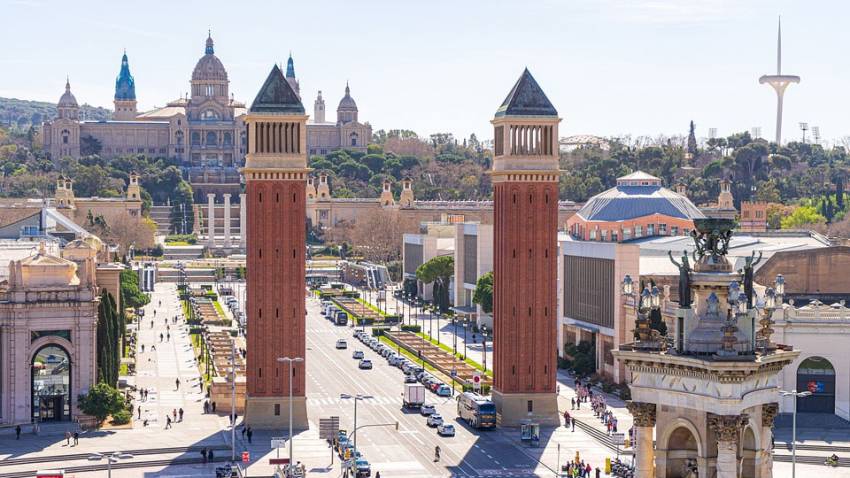Visiting Spain from Israel

New Delhi : Now that Spain is getting the pandemic under control, they are working hard to attract international visitors. A huge part of their economy is based on the country’s incredible offering of sights to see and places to visit.
From Barcelona and Madrid to Seville and Galicia, Spain boasts one of the richest arrays of diverse locations of any country in Europe. Tourists come from every corner of the world to experience a bit of the Spanish culture
So, what do Israeli passport holders need to know before they plan a trip to visit Spain?
For starters, Israeli citizens planning on taking a vacation to Spain in 2022 should begin to familiarize themselves with the European Travel Information and Authorization System, also known as the Spanish ETIAS for Israelis. The ETIAS, which will be made available to Israelis by the end of 2022, will make applying for permission to enter Spain a breeze.
By moving the entirety of the visa-waiver application online, Spain is doing two things. For one, it is making the application process as simple as possible by eliminating any trips to an embassy or consulate or the need to mail important and personal documentation.
The second important aspect of the ETIAS is that it allows for an extra layer of security, which lets both residents and tourists alike breathe easier knowing they are just that much safer.
With that in mind, what else do Israelis need to know about the ETIAS and what can they expect to find once they make it to Spain?
Travelling to Spain: Pandemic and Visas
The creation of the digital COVID certificate has made the verification that passengers are healthy much simpler. By digitizing the recent medical history of tourists, Spanish health and tourism ministries have helped remove the stress for everyone involved.
The same principles will soon be applied to the visas, or, more correctly, to the visa waivers that Spain issues via the ETIAS.
The ETIAS application will require Israelis to supply the Spanish authorities with personal details and information such as their full name as it appears in their passport, their date of birth, their current address, telephone number, and email address, and more.
In addition, Israelis will need to present a scan of their passport information page, a passport-style photograph, and they will need a valid credit or debit card so that they can pay the non-refundable fee.
Once the application has been submitted and reviewed, successful applicants will receive their ETIAS for Spain via their email. Then, they will be ready to check out what Spain has to offer.
The Call: Exploring Jewish Life in Spain
Before the Spanish Inquisition, Spain had one of the most vibrant Jewish communities in the world. Numerous cities had neighborhoods named “El Call” from the Hebrew word for community or congregation where Jewish life thrived.
The history of the Jewish community of Spain is riddled with terrible stories of oppression. However, despite that reality, cities such as Barcelona or Girona have worked to maintain the memory of those cultures. By preserving the infrastructure of their Jewish citizens, they have weaved these histories into the fabric of their respective presents.
Today, both Girona and Barcelona offer comprehensive tours of those neighborhoods. They have kept their titles (El Call) despite the changes those areas have gone through over the years.
The Museum of Jewish History in Girona offers a comprehensive and wonderfully curated retelling of the Jewish community in Girona. As Girona is just a short train ride away from Barcelona, a trip to the Catalan capital could be combined with a weekend getaway or day-trip to get a full picture of what Jewish life in Catalonia once was.
Andalucia: Visiting the Middle East in Europe?
Due to Spain’s geographic location, it is intrinsically tied to the history of more than just Europe. The history of the Moors and present-day Morocco in Spain means that the influence of those cultures can still be seen and felt today, particularly in Andalucia.
One shining example of the mixture of cultures from across these multiple regions is the Alhambra in Granada. This sparkling, mind-bending palace and sprawling grounds is a sort of palimpsest of the many lives that the building, city, and region have lived.
That is because, throughout the centuries, the building has housed leadership of various faiths who have put their individual touches and details all over. From the reliefs and tile work to the faded scriptures that can still be read, the Granada tells the story of Europe, North Africa, and the Middle East with a peaceful visit to this breathtaking site.
Elsewhere in Andalucia, some similar buildings and neighborhoods tell stories of the complexities of the area. For Israelis looking for a better understanding of how contemporary Spain developed into what it is, a trip down south is a great place to begin.








